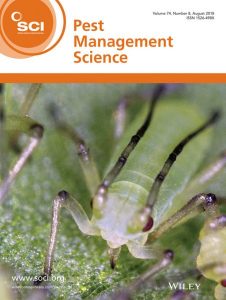Innovative control techniques for agricultural weeds are needed to fulfil global food production demands. In a new Perspective for Pest Management Science, Paul Neve looks at how the recent development of CRISPR‐Cas9 gene editing, which has now been developed for controlling insects that act as vectors for diseases, can be applied for weed management.
Neve explores the potential for Gene Drive Systems, considering technical feasibility and detailing the practical applications for weed management.
Potential approaches could include “population suppression drives” 1, introducing and increasing precise gene mutations that impact the fitness of weeds, or “population sensitizing drives” 1 that attempt to increase weed sensitivity to existing control methods.
The potential for gene editing to be too effective and lead to large population declines is one possible negative consequence and as such Neve notes that “regulatory and ethical barriers to the use of gene drives are likely to be more decisive than any technical difficulties”1.
The Perspective lays out the challenges and potential of gene drive systems, highlighting the importance of fully exploring these new possibilities to fulfil growing needs.
The Perspective is now freely available to read for a limited time here.
More From Pest Management Science:

















